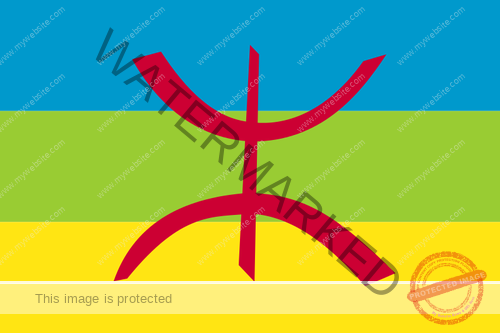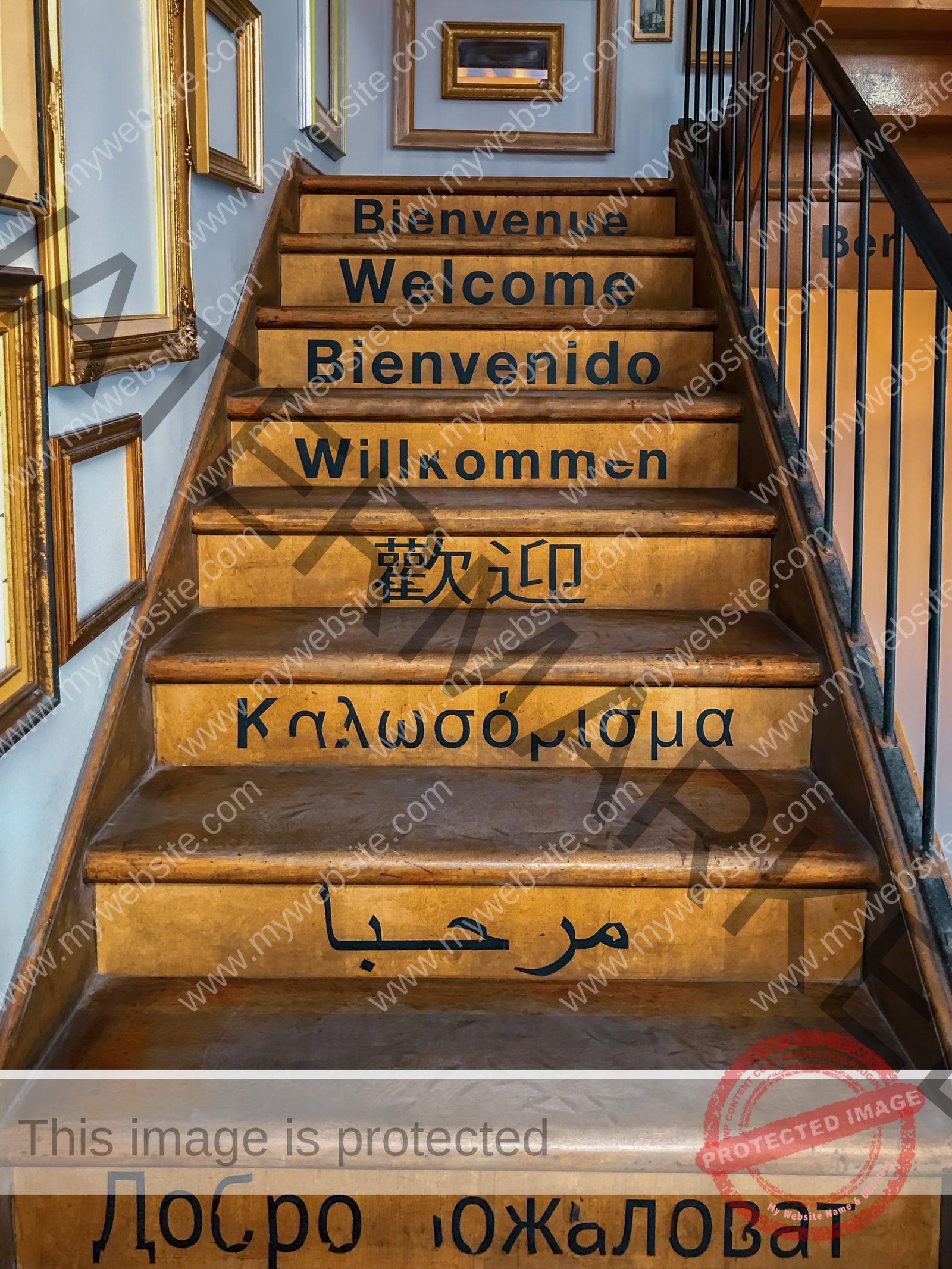Moroccan languages have made Morocco one of the most diverse countries globally; therefore, it plays a prominent and strategic role globally. Moroccans speak their national languages, Arabic and Tamazight; they also speak international languages such as French, Spanish, and English.
Top 4 Moroccan Languages
1. Tamazight
- The Berbers have been indigenous to North Africa for thousands of years. Tamazight is one of the oldest languages in humanity.
- Tamazight is widely used as a way of communication among non-Arab speakers. There are three types of Tamazight dialects: Tarifit, central Atlas Tamazight, and Tachelhit.
- Tamazight Alphabet is called TIFINAGH, which consists of 32 alphabets. They are rarely written as not many people know how to write them.
- Amazigh language is the first language spoken in Morocco before Arabic. This was when Islam was spread to northern Africa in the 7th century.
- The Arabic language is extensively talked about among Moroccans. Yet, the Amazigh language is spoken by almost 70% of Moroccans.
- Tamazight is the most spoken language per capita in the country. This is because 70 % of Moroccans have a Berber heritage.
- Tarifit speakers live in the Northern part of Morocco. Tamazight dialect is mainly spoken in the Atlas Mountains. Tachelhit is primarily spoken in the south of Morocco. It covers from the region of Marrakesh downward to the “Souss” region.
Moroccan Constitution: Approval of Tamazight and its recognition
- Tamazight was widely spoken in Morocco for centuries and before even Arabic. Yet, it was not recognized as the official language until recently. The Moroccan constitution approved it as one of the official languages besides Arabic. Thus, It became the official language in 2011, and since then, Tamazight has created a deserving space in Moroccan society.
- The Royal Institute of the Amazigh Culture (IRCAM) is an academic institution in Rabat dedicated to preserving the Amazigh culture and language. IRCAM) plays a significant role in ensuring the Tamazight language and culture are not lost or forgotten. This way, it gets passed on to the next generations to come.
- Tamazight is now taught in primary schools and universities, allowing all Moroccans to rediscover their almost-forgotten heritage and ancient language.
2. Moroccan Arabic “Darija”: Facts and Culture
- Moroccan Arabic (called Darija) is the country’s primary language. This is even though the majority of Moroccans are of Amazigh background.
- It is a dialect that all Moroccans speak. These include families, friends, shopkeepers, offices, cab drivers, schools, shopping centers, etc.
- Darija is hardly a written dialect, mainly used when speaking and interacting. Almost everybody in Morocco understands It.
- Some of the Darija vocabularies stays unchanged. Yet, some people include French or Spanish words when interacting with each other.
- Amazigh people, the aboriginals of Morocco, learn to speak Arabic Darija, and they sometimes talk it between themselves.
3. Conventional Arabic language
- The Arabic language creates a cohesive relationship between the Arabs and the Amazigh population. However, Darija is being influenced by other languages, such as French and Spanish.
- The conventional Arabic language is a modern standard language. It is used in government offices, schools, religious sermons, books, newspapers, news broadcasts, talk shows…etc.
- The standard Arabic language is predominant, given its religious and cultural status.
4. El Hassaniya Dialect Language: Facts
- Hassaniya is a form of Arabic dialect widely spoken in southern Moroccan provinces. It used to be just the Bedouin dialect.
- Beni Ḥassān people, Bedouin tribes, widely speak Hassaniya. Beni Ḥassān Bedouin extended their authority between the 15th and 17th centuries.
- The Bedouin tribes covered the space of Mauritania land into Morocco’s southeastern and Western Sahara. Thus, the Sahrawi people widely speak it in their interactions.
- It covers a wide geographical area. From the Noun river “WAD NOON” in southern Morocco to the Senegal River in south Mauritania
- It is the language spoken by Mauritanian Arab-Berbers. It is expressed in southeastern and southwest Morocco as well.
- It is estimated that there are about 40000 who speak this dialect. It is still the mother tongue and their primary language to interact.
- It has many phonetic and morphological traits that make it unique. It is a mixture of classical Arabic and is one of the nomadic or rural Arabic dialects.
- Hassaniya is a distinct dialect with a rich Berber vocabulary and expressions in many fields. These include medicinal herbs, agriculture, and geographical names.
- Including Berber words in the Elhassaniaya dialect is expected and not coincidental. This is because many regions that speak the Hassani dialect were primarily Beber/Amazigh. It replaced its original language, which was Berber/Tamazight.
- Even though it is not as dominant in Morocco, it is spread sparingly throughout the country. About 1 % of the population in Morocco speaks the Hassani language. Most of them are primarily in the Southern provinces.
5 . International Languages Morocco: French, Spanish and English
French
Before the colonial era, the Moroccan people mainly spoke Arabic or Tamazight, and no foreign languages were introduced. However, when the French colonizers arrived in Morocco in 1912, they introduced the French language. Gradually, the French language spread throughout Moroccan society and culture, eventually becoming widely spoken.
Following Morocco’s independence, the country began a process of Arabization. Despite this, the French language remained a prominent part of Moroccan society and was largely untouched. Today, French is still spoken by many Moroccans, particularly in urban areas and among the educated population. It is also an official language of the government, along with Arabic.
Today, you still see French in all sectors as the French authorities integrated it into all crucial sectors:
- Media
- Schools
- Diplomacy
- Businesses
- Government offices
Spanish
The Spanish language was introduced to Moroccans by Spanish-speaking Andalusian Muslims and by the Spanish government at the time of Morocco’s Spanish occupation. This was when it acted as a protectorate of the country after 1912. Since then, the Spanish language has influenced Morocco’s language and culture. Today, there are about 4 million Moroccans who speak or understand Spanish. Most of them are Moroccans living in the country’s northern regions. This is because these regions are close to Spain. Also, there are many trade activities and high Spanish tourism in the northern areas.
English
Even though French and Spanish are widely spoken in the country, the English language is rising in Morocco. Larger cities, Casablanca and Marrakech.., are quickly implementing English as their first “foreign” language.
English is the country’s second most widely spoken foreign language. This is according to recent data revealed by the High Commission for Planning.
The English language constitutes an integral component of universal languages. About 18.3% of Moroccans can read and write in English. This is according to the General Census of Population and Housing (RGPH 2014). Most of them are educated in the younger generation, and the number continues to grow.
You will notice that the sellers use English to interact with tourists when doing street shopping. Some would call out for your attention and negotiate a sale in English.
In Morocco, English is being taught in:
- Moroccan private schools.
- Government schools and universities
- English private centers, such as British and American centers
Many actors lead to The widespread of English in Morocco:
- The booming tourist numbers in recent years, the widespread of the Internet, and the use of social media
- Morocco is opening up its doors and has received many foreign investors from all over the world.
- English has become a critical skill for Moroccans looking for international job positions to work with global companies.
- Globalization and increased demand for English language skills.
Many companies integrate English as essential to hire job prospects in many fields:
- Medical/ Clinics
- Hotel business, museums
- Tourism, foreign business affairs
- Science, IT (Information Technology).
- Big shops, industries, and transport companies
Learn Arabic
There are many resources online to acquire Moroccan Arabic “Darija.” Here is some Moroccan Arabic Nitty-gritty:
Meet and Greet
Hello——— Salam
Yes—– Na-aam
No—— Laa
Good morning———- Sabah Al Kheer.
Good evening—— Mssa Al Kheer.
Thank you——- Shoukran



